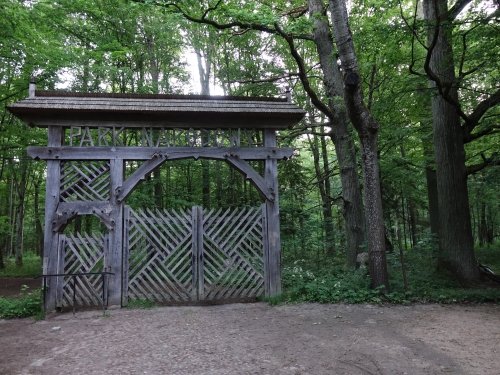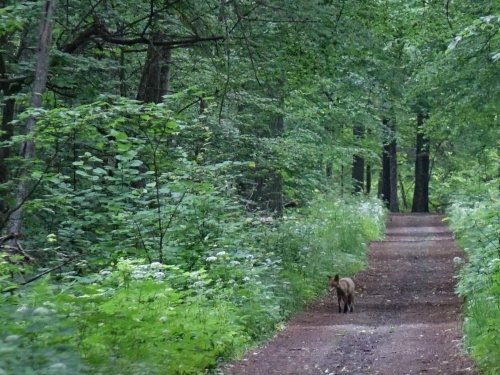Els Slots
WHS #703: Bialowieza Forest
After so many unsatisfying visits described by previous reviewers, I tried a different approach at covering Bialowieza Forest . I pre-booked a private tour into the Strict Reserve on the Polish side, a part that can only be visited with a licensed guide. This is also the core area that was originally inscribed in 1979 (the WHS has been extended several times since). I went with Arek Szymura of Pygmy Owl Nature Tours ; I knew he was serious when he suggested to meet up at 4am! Just in time before sunrise, it was light already and a pleasant 15 degrees Celsius.

So at 5 minutes to 4 I stood waiting in front of Bialowieza’s orthodox church. This lies next to the Palace Park, which I had visited the day before. Our tour started with a quick crossing of that park (with a short stop for observing a tawny owl) and exiting it again at the north-western corner. Between the park and the strict reserve is a stretch of some 500m of meadows, they were very pretty in the early morning light with a bit of haze. We encountered a small group of people with spotting scopes there, hoping to get a glimpse of bison who sometimes come out of the forest to graze. However we only saw the first woodpecker of the day (many more were to follow, “The Bialowieza Forest is paradise for woodpeckers” – the nomination file states rightly).
The Strict Reserve has a similar wooden entrance gate to the Palace Park. This one though does have a UNESCO WHS sign (Solivagant was wondering in his review that none of the notice boards show the UNESCO logo – well, here it is ) and a Biosphere Reserve logo. The access gate is not guarded, however you are only allowed to enter with an official guide. Two tourists were walking behind us on their own and my guide resolutely sent them back.

The biggest difference between the park and the reserve is that it is much darker inside the latter. Very high trees compete for a bit of sunlight, only the strongest ones survive. Also, the forest floor is covered with all kinds of plants, young trees and older ones that have collapsed. Just like the park, the reserve also has a network of trails although they are not signposted. An old Russian road crosscuts it as well, one of its markers stands next to the memorial where Polish and Soviet partisans were executed during WWII by the Nazis.
The guide was often scanning the trails with his binoculars: the larger mammals like to walk on the paths as well, they are much easier to navigate than the thickly covered forest floor. We saw a young fox early on. A bit later we encountered an odd combination: another fox in the company of a domestic cat! The cat comes from town but supposedly likes to venture into the forest, efforts to return it have had no success. Our final mammal ‘tick’ was a squirrel….
With no luck at larger mammals, we concentrated on the birds and the trees. Actually, the birds are easier to see in the Palace Park. But we observed a Black Woodpecker (the biggest species) hammering away, which was quite spectacular. The forest has several very old and high trees. But a lot has also come down in recent years, due to snowfall, fire and a severe storm.

The tour costed 300 zloty (ca. 70 Eur) for 3 hours. We encountered two more official guides, each with a single tourist in tow. Another one that advertises in town and on the web is Edu-tour Puszczyk . I don’t think there is much difference between them: Arek is mainly a birding guide, he knew the Dutch names of all the birds we spotted. The best thing about the guides is that they will get you in and know the way out!
More on
Els SlotsComments
No comments yet.
